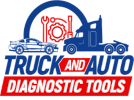Understanding Emissions Compliance
Emissions regulations are becoming increasingly stringent for commercial truck fleets. These rules aim to reduce harmful pollutants, including nitrogen oxides (NOx) and particulate matter, improving air quality. Staying compliant requires regular diagnostics and maintenance of emissions systems like Diesel Particulate Filters (DPF), Selective Catalytic Reduction (SCR), and Exhaust Gas Recirculation (EGR).
What Tools Do I Need for Truck Emissions Compliance?
To ensure your fleet meets emissions standards, invest in diagnostic tools designed to manage and monitor emissions-related systems. One of the most advanced tools for this purpose is the Texa Axone Nemo Plus Truck Diagnostic Kit with MultiHub.
Features of the Texa Axone Nemo Plus:
- Comprehensive Emissions Diagnostics: Includes support for DPF, SCR, and EGR systems.
- Live Data Monitoring: Tracks real-time performance of emissions components.
- Guided Procedures: Provides step-by-step instructions for maintenance tasks, such as DPF regeneration.
- Wide Coverage: Compatible with a range of commercial vehicle brands and models.
Steps to Ensure Emissions Compliance
- Understand Local Regulations
Research emission standards applicable to your region. In the U.S., fleets must comply with EPA regulations, while Europe enforces Euro VI standards. Non-compliance can lead to hefty fines. - Regularly Inspect and Maintain Emissions Systems
- DPF Maintenance: Regenerate or replace DPFs when necessary.
- SCR Inspection: Check DEF fluid levels and SCR injector functionality.
- EGR Cleaning: Clean EGR valves and coolers to prevent clogs.
- Utilize Diagnostic Tools
- Diagnostic Scans: Regularly run scans for emissions-related fault codes.
- Sensor Monitoring: Track NOx and oxygen sensor data for irregularities.
- System Testing: Use guided procedures in the diagnostic tool to perform functionality tests.
- Document Compliance Efforts
Maintain detailed service records and diagnostic reports. Some tools, like the Texa Axone Nemo Plus, allow you to store and retrieve reports digitally for audits and inspections.
Common Emissions-Related Issues
DPF Blockages
- Cause: Excessive soot accumulation due to short-haul driving or lack of regeneration.
- Solution: Use your diagnostic tool to initiate forced DPF regeneration.
SCR Malfunctions
- Cause: Poor-quality DEF or system leaks.
- Solution: Perform an SCR efficiency test and replace defective components.
EGR Valve Failure
- Cause: Carbon buildup in the EGR valve.
- Solution: Clean or replace the EGR valve.
Benefits of Staying Compliant
- Avoid Penalties: Non-compliance can result in fines, vehicle impoundment, or even license revocation.
- Increase Fleet Longevity: Proper emissions system maintenance improves overall engine health and extends the life of your fleet.
- Enhance Reputation: Customers value environmentally responsible businesses, and compliance can boost your brand’s image.
Proactive Steps to Manage Emissions
- Invest in Reliable Tools: The Texa Axone Nemo Plus simplifies compliance efforts with advanced diagnostics and intuitive interfaces.
- Schedule Routine Inspections: Perform emissions diagnostics at least quarterly or more frequently for older vehicles.
- Train Your Team: Ensure fleet mechanics are familiar with both emissions systems and the tools used to manage them.
Frequently Asked Questions
Q: How often should I check my fleet’s emissions systems?
A: Regular inspections should be conducted quarterly or in conjunction with routine maintenance schedules.
Q: What happens if my fleet fails an emissions test?
A: Failing an emissions test may require immediate repairs. Tools like the Texa Axone Nemo Plus can diagnose faults and guide you through the repair process.
Q: How can I track emissions compliance?
A: Utilize diagnostic tools with reporting capabilities, and maintain detailed service logs for each vehicle in your fleet.

